How will beauty adapt to & own the ‘new normal’?
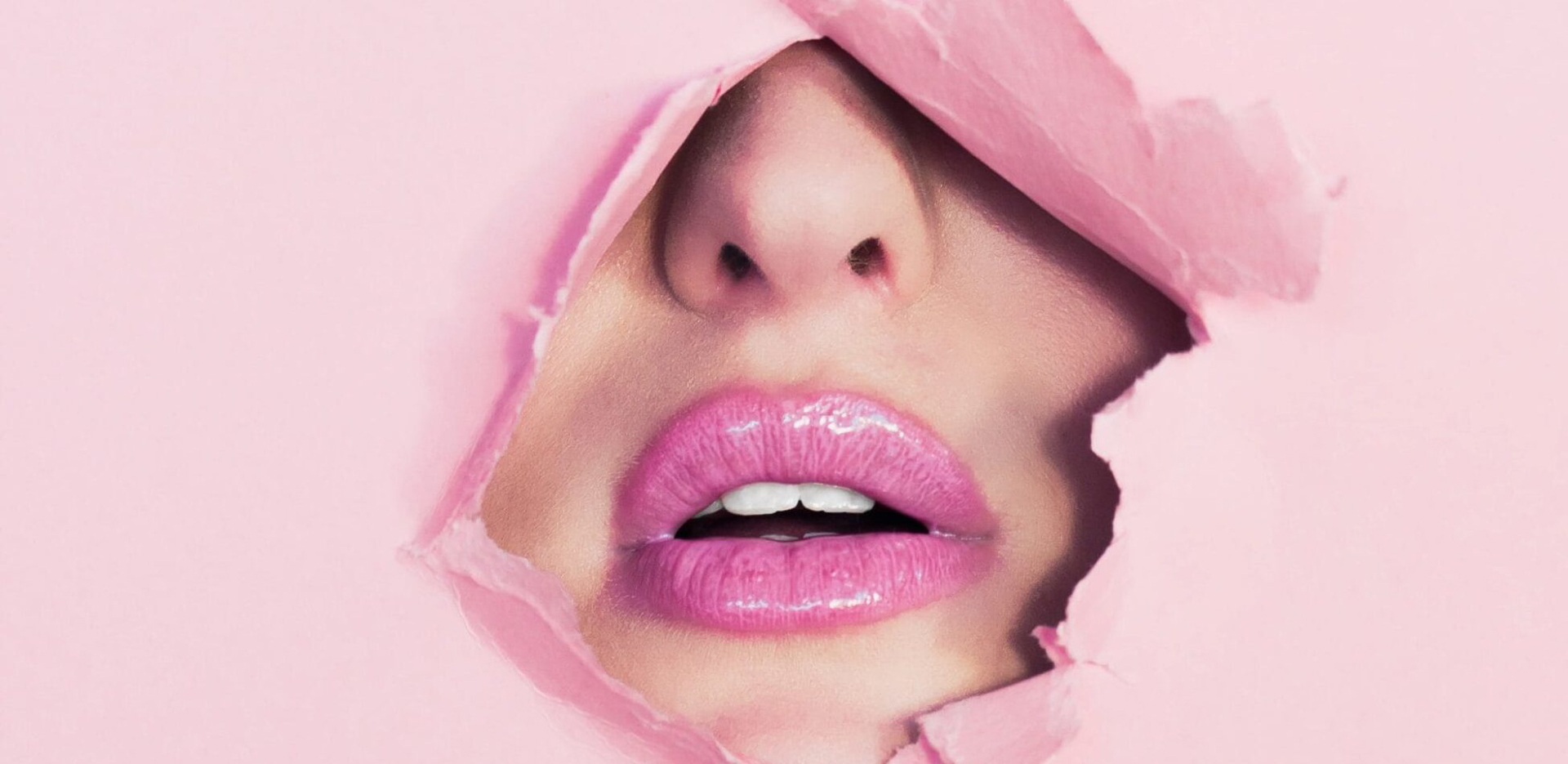
Re-engaging with customers in the physical realm during the pandemic
On re-opening beauty
The intimate and experiential nature of beauty retail means that there is a great deal to consider in terms of re-imagining the customer journey and using agile retail to alleviate customer fear in an age of uncertainty. Our exploration into the possible futures of retail in a post-pandemic world has led us to believe that the temporary measures that we are seeing currently will ultimately have to evolve into a longer-term solution that better meets the forever needs of customers whose number one agenda will be to protect themselves and others.
Through innovation and ingenuity, the beauty industry can be the sector that shines the way forward. Where some see a roadblock to conducting business, we see a new doorway opening. With collaboration between design partners, manufacturing suppliers, brands and consumers, we can not only get back to a sense of acceptable normality but bring back the joy of first-hand shopping and brand experiences.
In our latest insight report, we explore the possible pathways for retailers and beauty brands re-opening during today’s landscape by discussing the top 10 considerations to be had by beauty brands and retailers when it comes to re-engaging with customers in the physical realm of retail, including:
1 Interaction-free service
2 The new ‘hygiene’
3 The future of testers
4 Shopping by appointment
5 Informed decision making
6 Virtual consultation
7 Reconnecting the community
8 Re-inventing packaging
9 A.I beauty
10 Non-mission shopping
1- Interaction-free service
It’s clear that globally all retail experiences are going to have to adapt to a new way of functioning, not only to weather the current situation but potential future ones too. Retail stores the world over were not designed to support social distance or operate in a sterile way. According to a poll by ‘RetailX’ – “Almost nine in 10 (89%) UK shoppers say they have reduced or stopped their visits to shops as a result of the COVID-19 pandemic”. These statistics can be interpreted as a litmus test for the current shopper fear of entering retail environments in their existing formats.
The study also showed that only “43% ‘of shoppers’ say that after the pandemic is over they expect to carry on shopping in the way they do now”. This indicates that shoppers will absolutely need to be convinced to return to physical stores and the only way that can be achieved successfully is through the introduction of new measures and policies that assuage fear and build trust.
It can be said that shopper fear stems from the justified concern that interaction with anyone or anywhere outside of your specific household is a risk. It is this risk that drives shoppers away from physical retail environments, so by removing the need for interaction, we remove one barrier to customers returning to stores. For traditional retail, interaction seems like an unavoidable problem and the challenge of getting shoppers to return to physical environments appears steep. However some brands around the world are already operating in ways that show how reduced interaction can be delivered without negating customer experience. Korean beauty store Innisfree had been experimenting with its new shopping concept entitled ‘Self Store’ well before the pandemic hit.
We visited one of these stores in South Korea’s capital city Seoul and were pleasantly surprised by the quality of the self service experience. Shoppers can browse at their leisure surrounded by digitally enhanced ticket strips, signage and checkout experience – all but removing the need for staff interaction without reducing the level of education and engagement with product required to support a satisfying shopping journey.
With the need for staff to assist customers reduced, their focus can be redirected to keeping the space clean and safe, sanitising consumer touch-points and providing shoppers a sense of security.
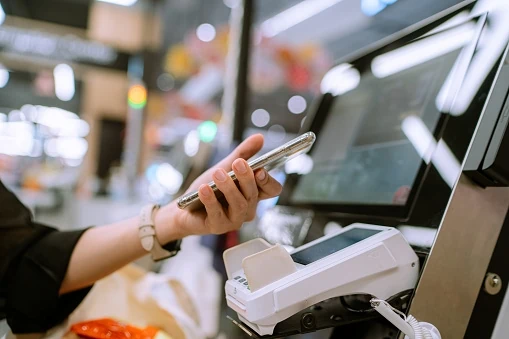
2- The new ‘hygiene’ is hygiene
In retail ‘hygiene’ is a term used to define the requirements needed to run a store successfully by meeting the expectations of shopper demand. For instance shoppers expect to be able to pay for items using a variety of payment methods, not being able to do so creates friction and subsequently barriers to purchase. However in social climate of today, the new store ‘hygiene’, is hygiene.
With consumer anxiety at an all time high, logical fear of public retail spaces is translating into a reluctance to visit them. Stores and brands are going to have to do everything they can to protect and assure customers to take the risk and return to shops again.
Robust cleaning policies and investment in new sanitisation technologies will be paramount in not only making shoppers feel safe enough to shop, but also to ensure retail is doing its bit to combat the spread of this virus and reduce potential future threats to business operation.
Brands need to embrace that moving forwards, they will be expected to provide a permanent hand sanitisation / hand washing facility; these sanitisation facilities should feel permanent, clean and luxurious. In a competition set by a creative muse of ours here at D4R; ‘Bompas & Parr’, entrants created some wonderful and whimsical conceptual responses to the ‘Fountain of hygiene’ sanitiser design competition.
Using luxury materials and a healthy dose of innovation the entries submitted illustrate how this could become a ritualistic norm for us all – a step we remember to engage with at the start of any retail journey in a post pandemic world. The concepts also showed how good design can create desire to use the sanitisation facilities, with future shoppers potentially favouring brands that do it well over brands that choose to do it in a temporary and lack-lustre way. Think being pleasantly surprised by the beauty and majesty of the rest room in your favourite restaurant as opposed to the utilitarian style found in supermarkets and public precincts.
We think that hand sanitisation will evolve from an epidemiological measure into a habitualistic yet ‘chic’ ritual.

3- The future of testers
The way that cosmetics retail is conducted has some fundamental issues that conflict with the ability to follow social distancing and heightened hygiene practices. The industry relies on product interaction in the form of communal testers and face to face advice from brand product experts –both of which do not mix well during a pandemic. A new way of providing the services customers want will need to be devised.
Possibly the most pressing issue for beauty retail is rethinking what the future of product testing should be.
According to a study of US consumers (by First Insight – CBO) ‘78% of shoppers do not feel safe testing beauty products in-store’. Such a high percentage of anxiety around testing product is bound to have a negative effect on product engagement in stores, as well as increase the amount of dissatisfied customers leaving negative feedback, due to choosing the wrong product to purchase as they have not been able to test out products easily before committing to a purchase.
Looking to the latest trends in packaging-free products such as the ‘naked’ Lush range and trends within skincare, we can imagine a world where sustainable and biodegradable single use ampoules could replace traditional on shelf communal-use testers. Ampoules make disposable and small products feel more luxuriant and special, having a sense of being dedicated ‘just for me’. Acting both as a remedy for the lack of traditional test product going forwards whilst providing an elevated experience for shoppers and cosmetic enthusiasts.
Another solution to support the consumer in their product testing, prior to purchasing their personal preference in product is the idea of a range tester pack. Through necessity, gone are the days of tester products, that often are well used and sullied – instead free or low cost tester packs or product libraries could be created. These packs could be enjoyed in-store at a regularly sanitised vanity moment or taken home to be experimented with at the shoppers leisure. Fine fragrance boutique; ‘Floral Street’ offer a low priced scent library that allow consumers to try out their entire range in small doses to find their specific favourite. Shoppers can then return to store for instant gratification or order online the scent they want most.

4- Shopping by appointment
With the way we shop needing both fast change in the short term to regain revenue, and more wide ranging evolution for the long term, the beauty industry has a unique challenge – to create the new way to shop. With shopper density and volume posing an issue during times of social distance the need for a new system of interaction is paramount now, as well as to provide future proofing to the shopper experience and preparing better for potential future pandemics. Boots have recently invested in geo-targeted ads that will let shoppers know when their closest store is less busy, helping to facilitate social distancing in a world where public contact spells anxiety for many. Swedish technologists Ombori’s window scanning virtual booking concept gives users live updates on store occupancy, and an option to join a virtual queue.
We believe that inviting shoppers back to physical retail spaces with a more measured, dedicated approach will empower people to return to stores. An increase in appointment based shopping could help instil a sense of confidence in shoppers, by somewhat removing the worry of high capacity shopping spaces and by association, the heightened risk of contracting the illness. This new mechanic would also make it far easier for staff to maintain a clean and safe environment.
Shopping by appointment need not be a hassle either, brands such as Diamond jeweller ‘Vashi’, perfume house ‘Ex Nihilo’ and Matches Fashion make their experience truly special by offering appointments that enable them to create a treasured and personal experiences for each and every customer. In Mayfair, London ‘5 Carlos place’ is a store launched by Matches fashion that offers a tailored experience allowing shoppers to choose what they want to try on before arriving at the store. The selected garments will be set waiting for the customer to arrive in their very own changing room with their name on it – a truly personal touch.
Ex Nihilo offer the chance to book an appointment to craft your own fragrance by combining base notes into a bespoke blend; the theatre of the process make the service feel decadent and special. Custom engraved bottles, choice of luxury decorative lids and labels make these fragrances a perfectly thoughtful gift. We are also reminded of the Selfridges fragrance lab which is heralded as one of the best experiential retail moments of all time. The fragrance lab activation, and its slow but meaningful nature seems like a good precedent for creating more appointment based product journeys that bring back both joy to shopping and feasible logistic that calms the potential spread of viral pandemic.

5- Informed decision making
Online sales have been one of the only ways beauty shoppers have been able to get a hold of their cosmetic and skincare favourites whilst lock-down measures force beauty halls to close their doors. With non-essential stores set to re-open in the coming weeks, brick and mortar retail will need a new approach to both re-ignite sales and satisfy customers that have up until recently taken their custom to online platforms whilst unable to visit stores. Brands and retailers need to take a leaf out of the books of online beauty start-ups and digitally native brands.
Creating an experience that provides all the benefits of online shopping and more within a store will be of great importance when it comes to convincing shoppers to return to physical environments. Digitally native brands such as ‘The Inkey List’ & ‘Il Makiage’ are shining examples of how an effective customer journey can nurture decision making, engage their community in an omni-channel way with content, and provide real world benefit to its customer-base.
In the world of beauty & skincare, the one size fits all approach just doesn’t work for its demographic, often leaving them lost and unable to define their needs without having done extensive research before hand or risking dissatisfaction though a ‘trial and error’ approach. ‘The Inkey List’ however, provides a solution to customers paralysed by choice through a clever system that uses a short quiz to ascertain exactly the right skincare regime for you – a recipe list of products that are both personal and effective.
‘Il Makiage’ uses its web store to provide a very visual way to shop. Starting with the most popular looks trending on social media in your geographic locality through its strong base of local influencers and affiliated beauty bloggers. Shopping by look enables them to leverage ‘get the look’ beauty tutorials, connecting desirable looks with the products used to make them as well as engaging the customer with popular social media personalities.
The brand also utilises a short quiz to assist in the selection of the specific foundation shade the customer needs. Assurance is given to customers who are naturally anxious about getting the right skin-tone match through their risk free 60 day trial period whereby a refund can be obtained if its not what you had hoped for. It is this ‘put your money where your mouth is’ belief in their product and process that provides security for it’s customers.
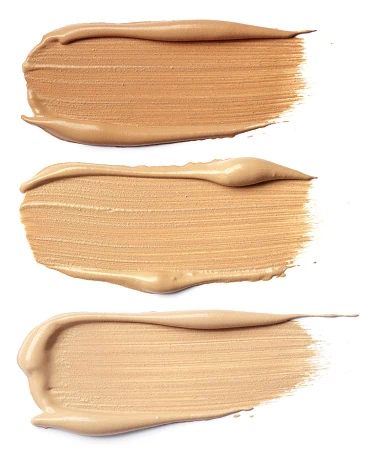
6- Virtual Consultation
Social distancing is here to stay for what looks to be longer term than anyone had hoped. With increasingly prevalent investment in digital and online content platforms in recent years, we look to the digital realm for answers to solve the issue of staff engagement in a post pandemic world. Face to face interaction and human connection is still one of the most important selling tools that convinces customers to make a purchase. We feel that across the board, beauty retailers and brands will need to leverage virtual and video consultations as a new necessity of operating.
With a decline in consumer desire to get too close to anyone in terms of proximity, stores that will no longer be facilitating face to face interaction will need to be able to connect and keep the conversation around product going in a new way. One way brands can do this is by providing virtual or video consultations live from store. Staff would move from their standard face to face physical sales strategy and step into the role of digital based assistants as experts providing a virtual service. Many beauty brands have established communities of content creators but most are either pre-recorded and so not responsive to consumer need, or not best suited for consumption in a store environment or viewed on a mobile device.
Boots have stepped up to the plate at time that coincides with their latest ‘No.7’ launch to offer shoppers ability to partake in online live video consultations with ‘No.7’ beauty advisors. Sessions can last between 15-20 minutes, focussing on skincare and cosmetic advice – all accessible in a safe way in-store.
‘Deciem’ are one group of companies that are offering support to customers in their homes by making the often self directed shopping experience online more akin to that of a physical store where staff would traditionally be on hand to provide great and conversational customer service. Instead of digital advisors reading from a brand tech sheet you get through to real people who share opinions and advice based on real world experience. Other beauty brands are offering similar services such as ‘Bobbi Brown’ with their Pro artist in your pocket, Clarins with their ‘Clarins & me’ appointments and ‘The inkey list’ with their ‘#askINKEY’ live chat; all of which are positive steps towards providing virtual services that customers value and make use of.
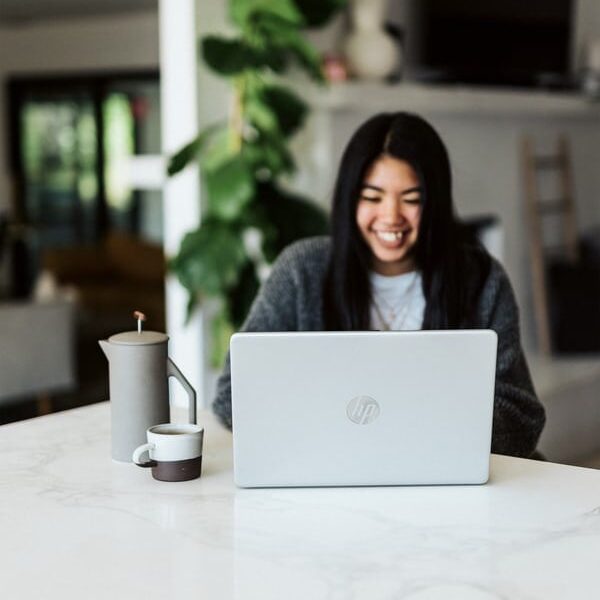
7- Reconnecting the community
After months of lock-down measures the world over people are feeling a real disconnect from their community and the once bustling beauty halls with their abundance of happenings, engaging activations, and latest product campaigns. With many brands holding back from producing new experiences, or experiencing reduced reach, customers are definitely feeling a bit of a void forming. One that is not fully satisfied by the trend of universal zoom meetings in place of a tangible sense of community.
Upon reopening retail, beauty brands have an opportunity to experiment with new ways of creating a sense of community and excite customers once again with activations that are designed to invigorate and inspire. With the tactile experience of physical retail severely weakened by the current state of affairs the visual will become ever more important. A more visually stimulating
approach to story-telling and brand identity could be a way to bring the community together.
Activations or campaigns which are visually stunning will encourage online social sharing, supporting digitally native generations to create content they can be a part of. We think back to activations by beauty brands such as ‘Benefit’ with their graphic and thematic pop-up experiences such as the disruptive pink and yellow fried chicken shop, or ‘Glossier’ with their oh-so instagrammable millennial pink pop up environments.
Another way we could encourage and restore a sense of community is by creating digital ‘I was here’ moments for customers to digitally leave their mark on store or beauty hall environments by leaving product recommendations or reviews for other shoppers to use in their decision making process, where reduced staff presence may be likely. This could be done through shoppers personal mobile devices or at serviced touch-points that are regularly sanitised after use. A best in class example of this being ‘the message tree’ at the revolutionary Samsung flagship space, Samsung KX at Coal Drops Yard. Here customers can leave, and read virtual messages through AR enabled devices- creating moments of virtual community with the physical environment.

8- Re-inventing packaging
In our last report on reopening retail, in general we talked about the need to start designing spaces with anti-microbial / anti-viral substrates and materials, so that our public spaces would be better equipped to cope in future pandemics as well as alleviate some of the issues with the current state of affairs. However we feel this could be taken much further for many sectors and specifically the beauty industry. If we can apply coatings to existing surfaces, disinfectant to materials we can’t replace, and where possible design high touch surfaces with new innovative materials that do not allow for the ability for microbes and viruses alike to live on them, then we can apply this approach to packaging too.
We can also see a future where we may need to re-think the way we consume and discard packaging to mitigate transmission of future dangerous microbes. Bath and beauty brand ‘LUSH’ have spent much time and effort perfecting their naked range of products that aim to solve the problem of waste packaging
damaging our environment. Removing packaging for products that are self-cleaning such as shampoo, cleansers, or soaps removes the surface for viral transmission.
Re-invented packaging could well be one measure brands look to explore moving forward, with consumers likely staying loyal to the brands that meet all of their agendas, such as climate change, conscious consumption, and keeping safe from the pandemics of the future.
Another possible future for packaging of beauty products is to provide product in larger volume packs to reduce the number of trips an individual must make to remain stocked up. This could be achieved a number of ways; adopting simply higher volume product packaging of in demand products, bulk packaging whereby multi buys are encouraged or even subscription based boxes of product similar to the popular birchbox platform.
Packaging innovation could take things further still by protecting end users through the reduction in the amount of touch & interaction needed for operation. Microsoft Xbox, with the aim of aiding its customers with limited mobility, created packaging for the shipping of their adaptive controller that could be operated with a single hand. We think it is this kind of positive step forward in terms of ergonomics that could be taken up, reducing the amount of touch needed for the use of beauty products and packaging, making it less likely to spread the virus to multiple extremities, as touch is one of the primary vectors for transmission.

9- A.I Beauty
Digital transformation has been a topic widely discussed and taken up in varying capacities for almost every industry, but the digital augmentation of physical spaces with smart tech within retail has been slow to adopt. Looking to the far east, to Korea, Japan, and China we see progression for beauty brands utilising technology in a way that holds innovation at its heart. We feel that through bringing more tech into the beauty retail industry brands can not only provide customers with beneficial systems that aid decision making or brand engagement, but also a pathway towards a better form of conducting business, protecting its consumers from current and future pandemics.
One example of this fully immersive innovation is the ‘SK-II Future X store’ in Shibuya, Tokyo. The store is a high tech landscape that aims to combine a symbiotic mix of art, tech and beauty to empower new unexpected ways of shopping. Camera powered art installations and face scan analysis provide insight into both the brand and personalised product recommendations all without the need for touch or any staff intervention. SK-II here have launched their proprietary skin diagnostic booth that allows for diagnostics to be carried out from as much as 45cm away; audio prompts walk the customer through the simple process, again reducing the need for close quarters interaction with staff. One aspect of the store that really spiked our interest is that the systems within actually remember each and every visitor, recognizing them as guests.
Customers who have been registered as guests receive personalised content in-store, empowering them to make choices based on their specific skincare requirements. Curated products and dedicated stories can then be presented to them as a way of assisting customers to make the right choice, all without the need for staff, touch or trial and error product testing journey. This kind of modern clientelling is key to satisfying the modern consumers’ desire for personalised, adaptive, cross-channel service.
Augmented reality and Virtual reality is another way tech can be leveraged to enhance the in-store experience. These technologies enable shoppers to have a richer experience and understanding of product on offer even when other areas of the journey that would typically engage a customer have become more difficult. We look to precedents set by brands such as ‘Charlotte Tilbury’ with their A.R enabled magic mirrors, and digital make-up overlays by artists such as Ines Alpha and see great opportunity where technology can build a pathway to a future where we can be more connected with products even at times of social distance and with a need for careful shopping practice.
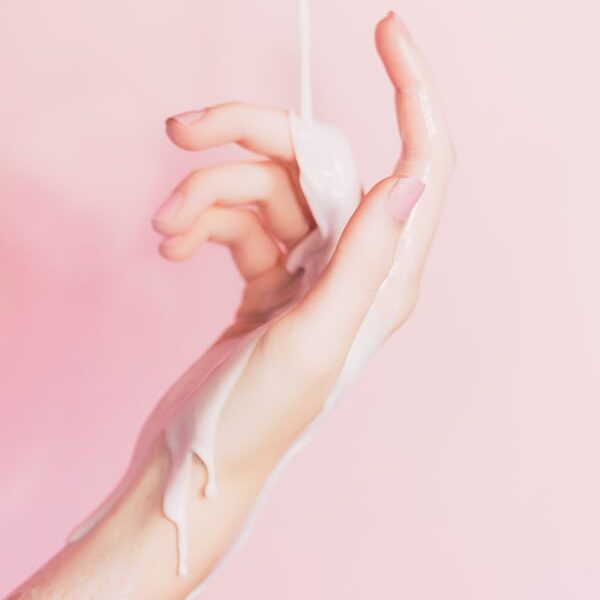
10- Non-mission shopping
Our final point brings us to an important consideration for all brands. Lock-down measures have been a catalyst to further increase essential and necessity shopping to move to online retail platforms. If online is faster, safer and cheaper, we believe it will continue to grow for the products we must buy for our everyday lives. Mission shopping – the act of going to a retail environment to fulfil a need may be increasingly heading online; however shopping as a pastime, shopping for leisure and the joy of discovery will cease to exist if brands neglect their physical offer. Physical presence and online presence work symbiotically support each other’s sales, one with out the other is wholly less satisfying for customers and does not work to aid brand affinity.
After the predicted initial rush to experience real world shopping again and as a way to re-discover the retail spaces and things that we have been deprived of during lock-down, we predict brands will have to do more than ever to kick start the longer term consumer resurgence into physical retail spaces.
Brands need to present something truly new to the consumer, making the experience and journey better than before. Consumers are desperately clinging to the hopes of a better future, in all aspects of life, even though outlook seems bleak. We feel brands and retailers have a challenge – to make shopping fun and fulfilling in spite of the less than palatable trials and tribulations we have faced during the current pandemic and government’s actions.
Consumers are ahead of brands in the sense that they lead omni-channel and interconnected lives, this will only grow as new generations come of age evolving to be natives to both digital and physical, demanding both. Researching online before committing to a purchase, following and creating content on social media and expressing opinion instantly are some of the benefits of the online world. But without real physical experiences that give a reason to shop within brick and mortar stores the joy of shopping or first-hand brand immersion that creates affinity will be lost. Big brands and household names could find themselves usurped by younger more agile start-ups that disrupt and enthuse consumers as their inaction drives further consumers to the perceived safety and familiarity of online platforms.

Our perspective…
Here at D4R we see many ways forward for the beauty industry in these uncharted times. We believe that through innovation and ingenuity the beauty industry can be the sector that shines the way forward. With self care and the pursuit of happiness ever prevalent in our minds, as lock-downs have unfortunately yet imperatively driven us apart, we feel that advances made in the beauty industry will pave the way for other industries to come together to shopper demand and actively grow it.
Where some see a roadblock to conducting business, we see a new doorway opening. With collaboration between design partners, manufacturing suppliers, brands and most importantly consumers we can not only get back to a sense of acceptable normality, but improve on it and bring back the joy of a first hand shopping and brand experiences.
Thank you for reading – Josh Knox.

Request the full article
"*" indicates required fields